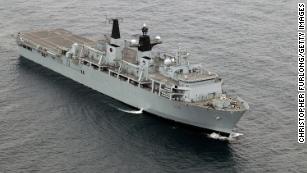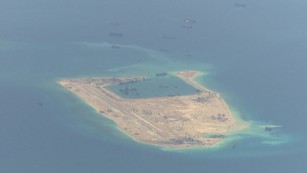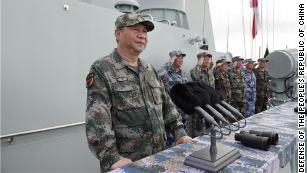Troubled waters: How Beijing won't back down over the South China Sea
The Chinese warship Lanzhou approached from behind, swiftly turning to starboard as it tried to cut across the USS Decatur's bow.
Under international naval law, the US destroyer had right of way. But the Lanzhou forced the US captain to essentially throw his 500-foot-long, 8,500-ton warship into reverse, avoiding a collision by seconds.
The two vessels came within 45 yards (41 meters) of each other in the September incident off the South China Sea's contested Spratly Islands, with the US Navy saying at the time that the Chinese warship "conducted a series of increasingly aggressive maneuvers accompanied by warnings for the Decatur to depart the area."
It was one of 18 encounters since 2016 between the US Navy and China's military that Washington has deemed "unsafe or unprofessional," and just one of many flashpoints in the South China Sea last year.
The situation isn't likely to improve in 2019, either. Tensions show little sign of easing, with some analysts predicting they could actually get much worse.
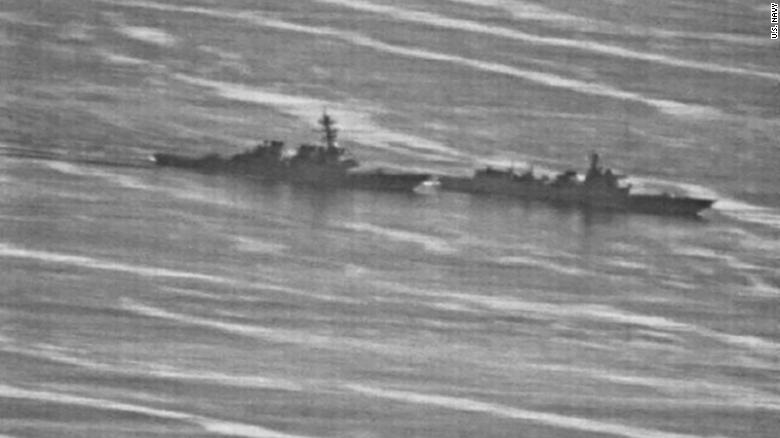
A US Navy ship had an "unsafe" interaction with a Chinese warship September 30 while the US vessel was conducting a freedom of navigation operation near the disputed Spratly Islands in the South China Sea, causing the US ship to maneuver "to prevent a collision," according to US defense officials.
Not backing down
China has claimed almost the entire 1.3 million square mile South China Sea as its sovereign territory, and has aggressively asserted its stake in recent years in the face of conflicting claims from several Southeast Asian nations.
"China is not going to ease up on its attempts to control the South China Sea in its entirety," said Malcom Davis, a senior analyst in defense strategy and capability at the Australian Strategic Policy Institute in Canberra.
"Basically, what the Chinese want to do is make the South China Sea their lake."

CNN's rare view of contested South China Sea
But the US isn't about to leave China unchallenged in one of the most valuable waterways in the world.
Washington says China's construction and fortification of man-made islands in the South China Sea puts trillions of dollars of trade, travel and communications under the thumb of Beijing.
"The Trump administration is not going to back off in the face of Chinese pressure," Davis said. Doing so would "severely undermine (US) credibility and encourage the Chinese to be more assertive and bold."
British warship sails near Chinese-controlled islands in South China Sea
He predicts US Navy warships will continue "freedom of navigation" operations near the contested islands -- something they did about every eight weeks in 2018, according to analysts.
US allies including Japan, Australia, the United Kingdom, Canada and France have also sent or plan to send warships to transit the South China Sea, though not as close to China-claimed islands as the US Navy has come.
With each of those operations comes the danger of miscalculation, as evidenced by the Lanzhou-Decatur near-miss in late September.
Militarized islands
While critics of US and Chinese actions in the South China Sea say they could quickly spiral out of the control, some pro-Beijing commentators have called for its navy to go even further.
"If a US warship illegally enters into Chinese territorial waters again, two Chinese warships should be sent, one to stop it and the other to bump against and sink it," Dai Xu, president of China's Institute of Marine Safety and Cooperation, was quoted as saying in an article on the Chinese military's English-language website.
Analysts cautioned that Dai doesn't officially speak for the People's Liberation Army. But former US Navy captain Carl Schuster said the presence of Dai's comments on the PLA website showed some level of support within the military.
"The goal is to see if (the US) will back down to avoid risking such an incident," said Schuster, a former director of operations at the US Pacific Command's Joint Intelligence Center.
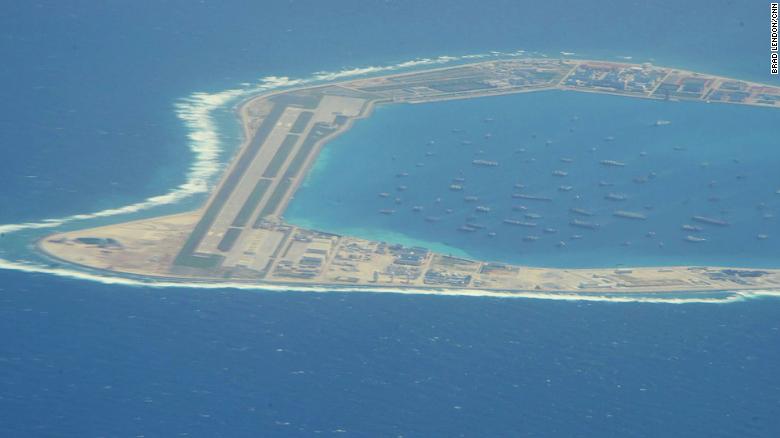
The Chinese-controlled artificial island of Mischief reef in the South China Sea, as seen by CNN from a US reconnaissance plane on August 10.
China could also push the envelope in other ways in 2019, Davis, the Australia-based analyst, said -- including introducing new weaponry onto man-made islands at Mischief Reef or Fiery Cross Reef in the Spratlys.
In May, China landed long-range H-6K bombers on Woody Island, its largest base in the Paracel chain. It was the first time the nuclear-capable jets had landed in the South China Sea.
While the move attracted a great deal of attention, the PLA has long had a presence in the Paracels and the chain sits in the northern area of the South China Sea.
CNN Interactive: The Battle for the South China Sea
White House warns China on growing militarization in South China Sea
But if the H-K6 were to appear on similar runways on Mischief or Fiery Cross in the Spratlys to the south, Australia or the US territory of Guam could come within their range.
China could also base extra -- and more advanced -- surface-to-air or anti-ship missiles on the Spratlys, effectively allowing it to strike anything moving in or over the South China Sea. Such a move could have huge ramifications, as one-third of global shipping flows through the waterway and some of the world's busiest air corridors pass over it.
Rising tensions
As well as further militarizing the islands it controls, Davis said Beijing may go as far as to declare the waters between them as sovereign Chinese territory -- not just the 12-mile line off the islands' coasts as it does now.
"That would be a step toward claiming the whole South China Sea," he added.
But experts warned that Beijing was playing a risky game, and could provoke an unwelcome response from Washington.
"Brinksmanship tactics could offer Beijing multiple strategic benefits if successfully carried out, but the risks are enormous and the outcome could be disastrous," said Timothy Heath, an Asia expert with the Rand Corporation.
Hostilities could also jeopardize China's relations with the Association of Southeast Asian Nations (ASEAN), and the framework of its agreement with the grouping on managing maritime disputes.
In August, China and ASEAN nations -- Brunei, Cambodia, Indonesia, Laos, Malaysia, Myanmar, the Philippines, Singapore, Thailand and Vietnam -- reached a draft framework of a code of conduct for the South China Sea, although substantial differences remain to be bridged before a final deal.

US aircraft carrier visits Vietnam
Five ASEAN nations -- Brunei, Indonesia, Malaysia, the Philippines and Vietnam -- have competing claims to parts of the Spratly and Paracel chains.
Any Chinese disputes with those countries could spark a wider conflict, said Isaac Kardon, of the China Maritime Studies Institute at the US Naval War College in Rhode Island.
While such clashes could start out small, they might spiral and escalate to involve other powers.
"The US would likely not be involved in such incidents, but depending on the facts and the degree of escalation, that could draw the US Navy into a testy situation with the PLA Navy," Kardon said.
Yet even without such a clash, it seems any cooling of US-China tensions is a long way off.
Xi Jinping's China shows off force in South China Sea
Chinese President Xi Jinping in June vowed there would be no retreat from his country's position in the South China Sea.
"Our stance is steadfast and clear-cut when it comes to China's sovereignty and territorial integrity," Xi said, adding that "any inch of territory passed down from ancestors cannot be lost, while we want nothing from others."
Xi's emphasis on historical claims, which China now has the power to enforce, suggests that troubled waters could lie ahead.
"The intensifying competition between the US and China is not just driven by the traditional dynamics of power politics between an established and emerging power," Adm. Phil Davidson, head of the US Indo-Pacific Command, said in November. "I believe we are facing something much more serious -- a fundamental divergence in values that leads to two incompatible visions of the future."
News Courtesy: www.cnn.com


